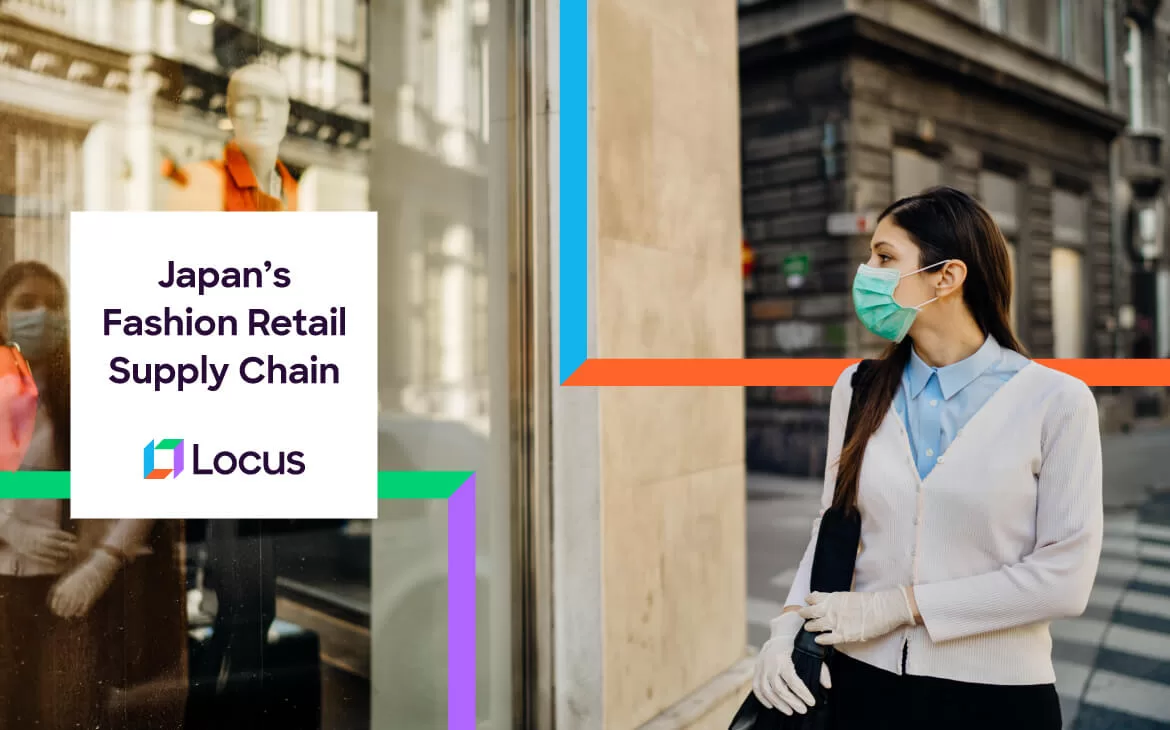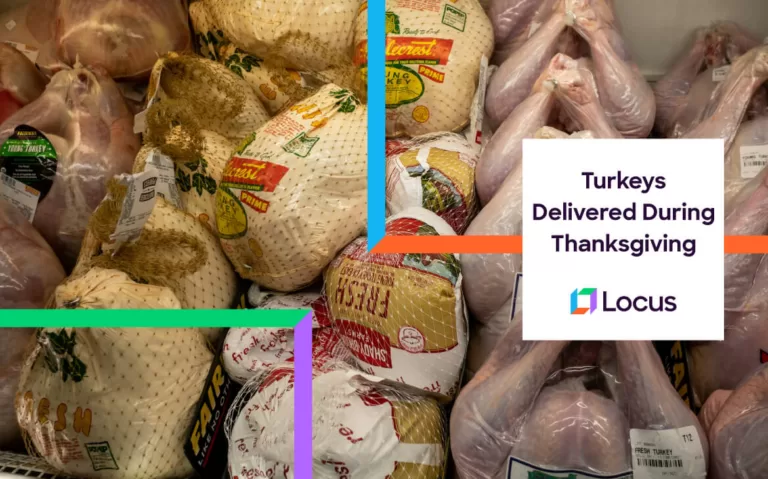3PL, Retail & CPG
Japan’s Fashion Retail Supply Chain is a Speed Game Now More Than Ever
Dec 17, 2021
6 mins read

Seasons come and seasons go. As do trends in fashion. Except that the trends in fashion are more dynamic. The market is perennially inconsistent as collaborations succeed or flop, new products emerge to replace the old, and social media channels make products go viral. Add to this the unpredictability of events like the Covid-19 pandemic, and we have a pretty temperamental supply chain environment for fashion retail.
Where does Japan figure in all of this? For one, it has the third largest apparel market in the world, according to Business Finland, trailing behind only China and the US. And two, it is fast evolving. A shrinking kimono market is paralleled with a growing taste for western fashion that keeps changing with the seasons.
In the year 2020 alone, the retail sales value of the apparel industry in Japan was close to $6.5 trillion. Close to half of these sales belonged to the women’s fashion segment alone.
What makes the Japanese retail industry stand out?
Japan has an affluent, well-educated population with a very high level of apparel sales per capita, about three times higher than China. These populations are concentrated in the country’s largest city, Tokyo, along with Osaka, Nagoya, Yokohama and Sapporo. The fact that the country has a large middle class that is highly conscious of the current market trends makes Japan’s fashion industry different from the rest of the world.
While the top apparel and accessory brands agree that product quality should get better with time, inventory priorities are always fluctuating. Only a modern and digital supply chain that is ever-evolving can manageinventory volumes and fashion supplier relationships that the industry requires while maintaining the product quality.
An inconsistent period of recovery
2020 and 2021 have been exceptionally difficult for global fashion retailers. For a brief period in 2021, it seemed like things were taking a turn for the better as pent-up demand brought customers back to stores.
‘Revenge buying’—a trend that had grown popular in China earlier in the year was cropping up in the US too, with a renewed focus on luxury, return-to-work and occasion styles. This vigor lacked in Japan due to a change in customers’ values during Covid.
This pent-up demand did lead to growth spikes, especially in first-world markets where consumers were fully vaccinated, but the situation is far from normal. While a handful of leading brands are flourishing, many businesses are still struggling to get on their feet.
Check Out: Retail/FMCG Sales Beat Planning
Online shopping thrives
The crisis has left an indelible mark on the fashion industry and the period of recovery is a rocky one, owing to these inequalities. Huge revenues are still collected by the fashion industry, with online sales taking the lead. According to Statista, 26% of the total market revenue will be generated through online sales in the fashion segment by 2023 and the number of users in the apparel industry is expected to amount to 229.4 million by 2025.
Fashion retail’s logistics deadlock
One in every eight businesses suffered supply shortages as a consequence of the pandemic in 2021, according to a McKinsey report. Staff unavailability, material and component shortages, roadblocks, bottlenecks in transportation and high shipping costs, all contributed to these shortages. The situation is better now, but many of these challenges still persist and will make their way into the new year.
As supply chain disruptions overstay their time, unexpected pressures on freights and port terminals, price hikes, new trade agreements and regulation compliances could all become the new logistical normal for the fashion industry.
A recent example of this is the Suez Canal blockage, when a container ship was wedged in the canal, bringing freight movement to a halt and leading to delays in deliveries. The incident is a sign that businesses need to buckle up and work on fool-proof contingency plans.
Customers today have become accustomed to speedy deliveries, and repeated delays can put off even loyal customers. The matters are further complicated by an increasing demand for sustainable sourcing, which puts more pressure on the supply chain.
There is a need for a plan that sticks; one that is preferably long-term, and this means proper logistics planning, streamlining production and keeping alternative suppliers at the ready.
A 3PL solution for the fashion supply chain
For businesses to not crumble, they will need to balance the demand for speedy deliveries with the need to ease the pressure on supply chains. Sharing the burden of enabling timely deliveries with a third-party logistics provider can help take some of the edge off. Advanced delivery optimization software providers such as Locus can help Japan’s fashion retail industry flourish even as it caters to fluctuating demands.
Locus can amp up the fashion retail supply chain with the help of its dispatch management platform. Locus’ automated dispatch planning software, DispatchIQ. Is an AI-enabled system that executes daily and hourly order dispatching in no time, while making room for on-demand orders. It also plays a vital role in enabling last-mile delivery. Logistics managers can thus plan shortest, quickest routes while keeping traffic, weather conditions and time-slot preferences in mind.
Since fashion retail businesses receive innumerable orders throughout the day, they need to be mapped quickly and accurately for delivery persons to locate. Locus’ geocoder simplifies even the most complex addresses to put them on a map and quicken on-ground delivery operations.
Locus TrackIQ, with its control tower and data analytics capabilities, can save time by analyzing metrics such as mileage performance and informing the customer as well as the provider of the Estimated Time of Arrival (ETAs).
A great way to future-proof the fast fashion and apparel supply chain is to increase operational efficiency by making use of optimized Permanent Journey Plans (PJP) and Permanent Dispatch Plans (PDP) with the help of Locus FieldIQ, which plans periodic sales beat plans and territory plans for retail brands to enable timely and sufficient replenishment of stocks in distribution centers and retail outlets.
The fashion industry in Japan and all over the world is in a flux and the quicker businesses move with the changing winds, the more they will flourish. Advanced logistics planning can help retailers keep their head above the water and tackle uncertainties better.
Locus offers best-in-class logistics technology solutions to supply chain enterprises to improve last-mile deliveries. Get in touch with us for a quick tour of our solutions.
Sources:
https://www.mckinsey.com/industries/retail/our-insights/state-of-fashion
https://www.gq.com/story/what-is-revenge-shopping
https://www2.deloitte.com/content/dam/Deloitte/at/Documents/consumer-business/at-global-powers-luxury-goods-2020.pdf
https://www.statista.com/outlook/dmo/ecommerce/fashion/united-states
Related Tags:

Blog
Looking Back at the Thanksgiving Supply Chain: How Turkeys Were Delivered to Millions of Americans
Thanksgiving day is already over. It's time to look back at how the 2021 thanksgiving supply chain worked in delivering turkeys to millions of Americans.
Read more
3PL
Top 10 Logistics Trends That Could Impact Supply Chains in 2022
The supply chain continues to evolve rapidly every year. Keep yourself updated on the latest logistics trends that could impact supply chains in 2022 and make your business as efficient as possible.
Read moreMOST POPULAR
EDITOR’S PICKS
SUBSCRIBE TO OUR NEWSLETTER
Stay up to date with the latest marketing, sales, and service tips and news


Japan’s Fashion Retail Supply Chain is a Speed Game Now More Than Ever